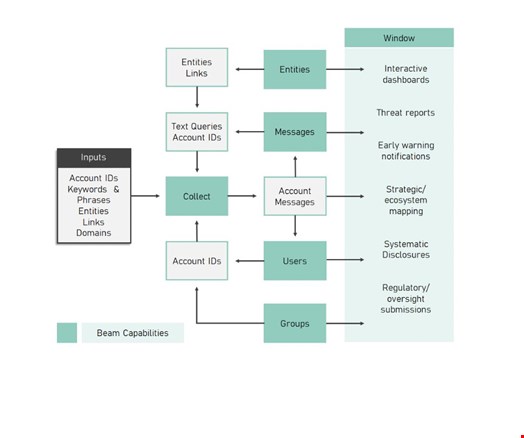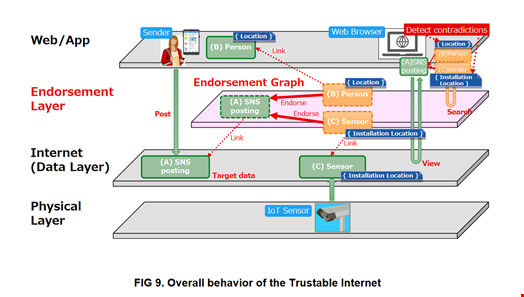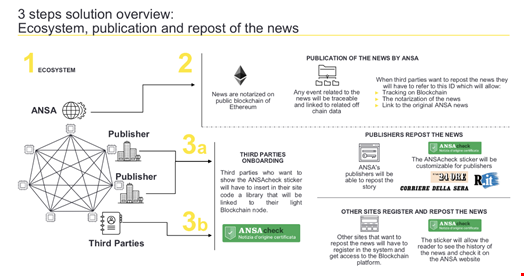The US Midterms and the Brazilian presidential election have shown, once again, how rife misinformation and disinformation are during democratic elections.
Several human rights groups and researchers claim that social media platforms struggled to follow through on agreements they signed with Brazil's Superior Electoral Court (TSE) in February 2022, in which they promised to combat material that could undermine the democratic process.
“On election day, and as the vote counting was underway in the following days, posts and videos containing misinformation and allegations of election fraud began to circulate on social media. [But] when it comes to electoral fraud, platforms have widely different policies, and even the stronger ones aren’t always enforced [and] tech platforms have a track record of bending their rules for powerful actors, and allowing politicians to get away with speech that violates their policies,” Human Rights Watch’s Deborah Brown, senior researcher on digital rights, and Maria Laura Canineu, said in a post on October 28, 2022.
Social Media Platforms Have Failed Us
Meta has claimed to have acted to take down disinformation on Facebook. However, this claim has come under scrutiny, and Global Witness, an international NGO, has investigated Facebook's work.
Speaking about Global Witness’ findings during DTX London on October 13, 2022, Carole Cadwalladr, Pulitzer-nominated investigative journalist, said: “[Global Witness] set up several accounts and created five types of adverts that contained false information about the Brazilian election and five more that delegitimize many aspects of the election itself. They were not based in Brazil, they were not using a VPN and every single advert they created deliberately violated all of Meta’s policies. All the adverts were accepted by Meta and allowed to be posted on Facebook.”
After Cadwalladr broke the Cambridge Analytica scandal in 2018, Facebook introduced the Ad Library, which she said “gives some measure of transparency but is highly insufficient. Still today, our elections are not safe. Facebook and other social media platforms have failed us and are a threat surface that bad actors can exploit as they please.”
Some organizations have been developing diverse approaches, methods and frameworks to tackle the problem of disinformation. These proposals leverage emerging technologies (including AI, data analytics and blockchain) to provide a more trustable internet. Infosecurity investigates three of the most prominent approaches.
The Civil Society Way: Institute For Strategic Dialogue’s and CASM’s Beam
On November 14, 2022, the think tank Institute for Strategic Dialogue (ISD) and the start-up CASM Technology, officially launched Beam, a multi-lingual, multi-platform toolset dedicated to tracking, exposing and confronting disinformation and other forms of manipulation and deception online.
According to its London-based developers, Beam is composed of two technical layers – extensively described in a white paper authored by Dr Francesca Arcostanzo and Melanie Smith, from the ISD, and Carl Miller, research director at Demos and co-founder of CASM Technology.
Beam’s underlying layer is a machine learning and data analytics tool developed over the last ten years by CASM, called Method52. This tool is made of around 100 components, responsible for a multitude of tasks, from collecting data from Facebook, Reddit, Telegram, Twitter, YouTube, PeerTube, 4Chan, Discord, Mastodon, mainstream media news sources and a large number of standalone websites, to analyzing text using natural language processing (NLP).
Beam’s core layer is made of the six Beam programs. Five of them are used to analyze the data collected and selected by Method52 (Beam Collect, Beam Messages, Beam Hate Speech, Beam Accounts, Beam Network and Communities) and one, Beam Window, produces Beam’s outputs, including dashboards, data visualizations, regular reporting and alerts, that are used to power responses to information threats.

When the ISD and CASM began work on a tool to fight disinformation in 2015, they wanted to develop a platform that is transparent and independent of any online service provider, work across as many different data sources, issues and languages as possible – including under-served languages – and adapt to new technologies and new methods of online manipulation.
Development of the Beam architecture began in 2018. In 2021, they were among the three winners of the US-Paris Tech Challenge, a competition on innovative responses to disinformation. They used the $83,000 funding prize to complete the development of the Beam toolset.
While the core Beam team includes experts in different matters, data journalists, open-source intelligence practitioners and Beam architects and developers, they also wanted Beam to be used by civil society organizations and power responses beyond platform removals or journalistic reports.
Practically, Beam is deployed in two different ways:
- Continuous monitoring, where online platforms, certain forms of language, lists of accounts, channels and spaces are monitored over time to identify information threats that are emerging, or changes in the salience, targeting or influence of ones that are already known to exist
- Deeper investigation, where specific illicit influence campaigns are subjected to decompilation and close scrutiny to identify their targets, effects, methods and possible success
Beam has unofficially been used in several events including the US presidential election in 2020 and the 2022 Midterms and France’s presidential election in 2022. Outside of elections, Beam has also been used during the Syrian conflict, the COP26 and COP27 climate conferences, and to analyze pro-Kremlin disinformation campaigns since the invasion of Ukraine in February 2022.
The Japanese Way: Fujitsu’s and Keio University’s endorsement layer
Japanese conglomerate Fujitsu and Keio University’s Trusted Internet Architecture Lab (TIAL) published a white paper on October 13, 2022, introducing their ‘trustable internet architecture,’ an architecture “that overlays a layer on the Internet with a mechanism to enhance the credibility of data.”
This ‘endorsement layer’ would scour the internet for authoritative data sources (people, sensors, and other sources of information on a given fact).
Each data added by an entity is subject to a digital signature to indicate that the source confirms it to be true. Third parties can verify it, giving it a higher level of credibility.
The ‘trustable internet’ model offers “an endorsement graph with a data structure expressing the connection between additional information linked to the data,” reads the white paper.
This endorsement graph would be accessible to the user transparently so they can understand the context of a news story and judge the credibility of each source's data. Browser extensions that allow users to filter info from the endorsement graph to meet their needs are suggested as a possible refinement.

The white paper details a scenario in which a social media user posts an image of what appears to be high quantities of dirty water flowing over a dam's spillway and into a river with an opinion that ‘there might be a flood.’ The scenario assumes that people see this and conclude there is a flood – sparking anxiety among residents, possible panic buying, or even an inappropriate emergency services response.
Users who view a post about a possible flood could request access to different pieces of data about this potential flood, which the endorsement layer would publish.
"This is expected to make it possible to prevent the use of unreliable data and the re-spread of disinformation and fake news," reads the white paper.
The TIAL said they were developing protocols on which the endorsement graph will be based and the reputation mechanism that will give sources a certain level of credibility. They will also work to test their model on other use cases.
The Blockchain Way: Agenzia Nazionale Stampa Associata’s ANSAcheck
In 2020, the Italian news agency Agenzia Nazionale Stampa Associata (ANSA) began collaboration with consulting firm EY to develop ANSAcheck, a news tracking system based on EY OpsChain Traceability. This technology allows public transactions to be recorded on the Ethereum blockchain.
With ANSAcheck, readers can check the origin of news that appears on ANSA platforms or other vetted publishers or is distributed to other editorial publications or third parties such as social media networks or other platforms.
Each publisher on the platform maintains a private JavaScript library that contains its original news stories, which is connected to EY’s notarization system. This system is responsible for posting the entry on the public Ethereum blockchain and has a backend system that allows publishers to join the blockchain solution.
The user interface features a frontend dashboard for news distribution monitoring.
EY manages the transactions for posting on Ethereum using a smart contract, a transaction protocol recorded on a blockchain that is designed to automatically execute pre-defined actions according to the terms of the agreement – here, that the news comes from a vetted publisher with its contextual details (date and place of reporting, etc.).
The smart contract mitigates the risk of ether’s price volatility by postponing the processing of new stories if the current cost of ether, the currency used on the Ethereum blockchain, is too high. EY also keeps transaction costs low by batching multiple news stories within a single transaction.

EY designed a three-step process to link ANSA with publishers in their ecosystem. In the first two steps, ANSA publishes and authorizes the story by posting it on Ethereum’s blockchain. In the third step, other publishers who want to repost the story with the ANSAcheck verification system will register to use the platform. Publishers then will trigger a transaction.
Since the end of 2020, ANSA has been working with other publishers, starting in Italy, where false news spread fast at the beginning of the COVID-19 pandemic.
Giuseppe Perone, EMEA blockchain leader at EY Italy, shared his experience with ANSA during a webinar organized by the Hyperledger Foundation on April 4, 2022.
Developments For future Digital Identity Standards
In addition to these approaches, several governing bodies are also working on trusted digital identity systems to mitigate the spread disinformation, including the European Union and its European Digital Identity Architecture and Reference Framework, and the World Wide Web Consortium (W3C) and its Verifiable Credentials Data Model, both introduced in the spring of 2022.
Some hope that these digital identity standards, together with an efficient news checking system, could help build a more trustable internet in the future.
